14 Different Types of Software Testing
- February 19
- 13 min

Agile software development isn’t a single method, but rather a family of frameworks and practices built around iteration, teamwork, and the ability to adapt. It came about because older, more rigid ways of managing projects, like the Waterfall model, often fell short. Instead of locking everything down upfront and following steps in strict order, agile focuses on delivering working software in small, regular chunks. This way, teams can react better when requirements shift, get feedback along the way, and provide real value to the customer much faster. The main goal is staying flexible and concentrating on getting functional software out the door throughout the project.
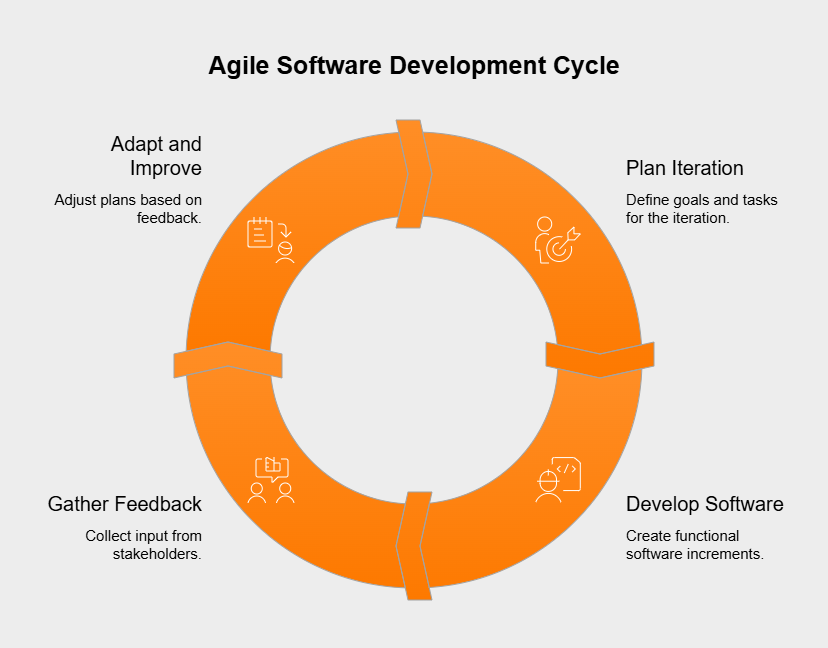
Think of the Agile Manifesto as the cornerstone document for agile software development, drafted back in 2001. It signals a fundamental shift in thinking by laying out four core values and twelve guiding principles. These ideas champion people, collaboration, tangible results, and flexibility, placing them above strict processes, exhaustive paperwork, rigid contracts, and unbending plans. It acts as a compass for teams looking for more adaptable, effective, and people-focused ways to create software.
The Agile Manifesto puts forward four key values, giving more weight to the items on the left than those on the right:
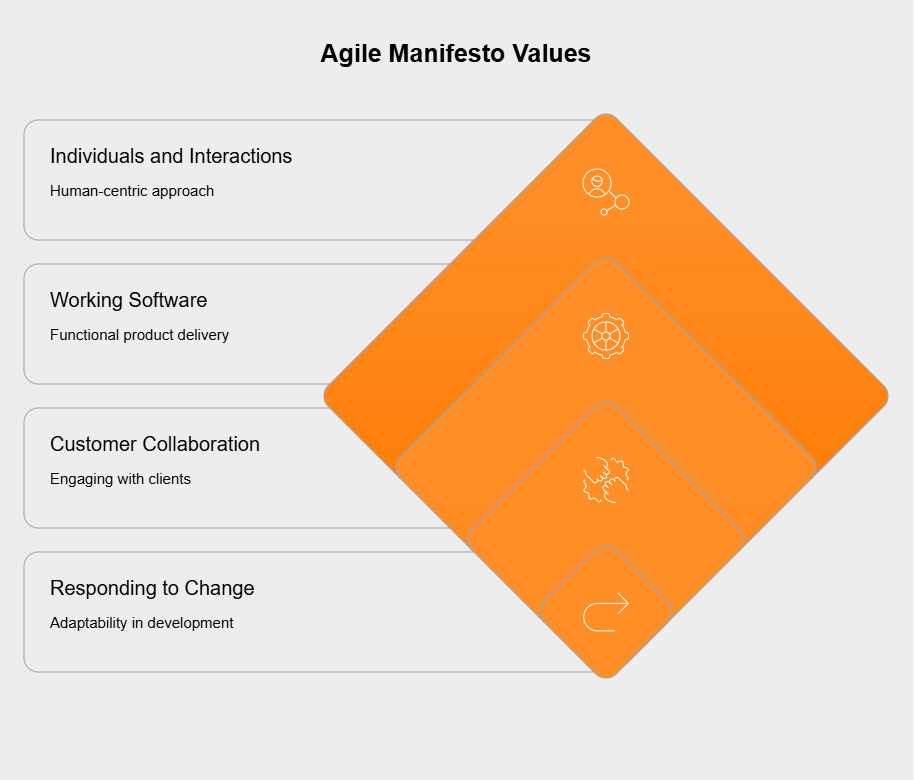
While the items on the right certainly have their place, these core values really underscore how crucial the human touch, real results, partnership, and adaptability are for building software successfully.
Building on the core values, the twelve principles offer more specific pointers for putting agile into practice:
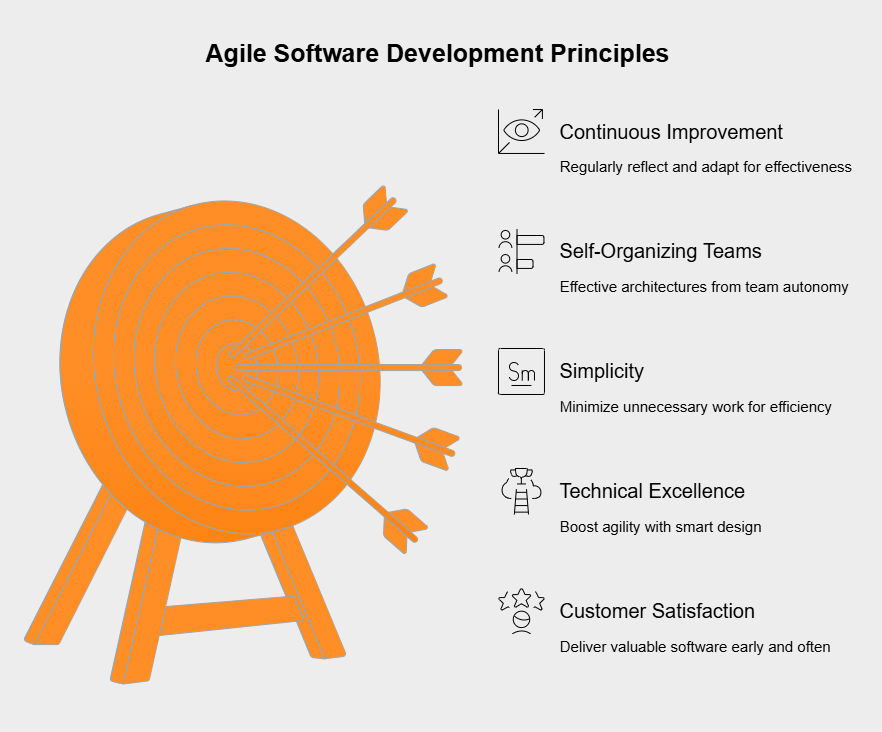
Agile is more of a philosophy, and several specific methodologies offer concrete structures for living out its values and principles. Each framework takes a different angle on managing work, defining team roles, and setting the project’s rhythm, letting organizations pick or mix-and-match what works best for them. Among the most popular agile methods are Scrum, Kanban, and Extreme Programming (XP).
Scrum is likely the most widely used agile framework. It breaks work down into fixed-length cycles called Sprints, usually lasting two to four weeks. It involves distinct roles (Product Owner, Scrum Master, Development Team), key documents or lists (Product Backlog, Sprint Backlog, Increment), and specific meetings (Sprint Planning, Daily Scrum, Sprint Review, Sprint Retrospective). Scrum relies on transparency, regular checks, and adaptation—an empirical process—to consistently deliver potentially usable pieces of software.
Kanban is all about making work visible, limiting how much is being done at once (WIP), and keeping things flowing smoothly. Teams use a Kanban board showing different work stages (like To Do, In Progress, Done). Tasks physically or digitally move across the board. By setting clear WIP limits for each stage, Kanban helps spot and prevent logjams, promoting a steady, continuous delivery of work. It champions ongoing delivery and process refinement without locking teams into fixed cycles like Scrum.
Extreme Programming (XP) is an agile method that puts a heavy emphasis on strong technical practices and software quality. It champions techniques like Test-Driven Development (TDD), where tests are written before code, pair programming (two developers working together at one computer), continuous integration (CI – merging code frequently), keeping designs simple, refactoring (improving existing code), and making frequent small releases. XP strives to boost software quality and the team’s ability to react to changing customer needs through tight collaboration, short development bursts, and disciplined engineering habits.
Beyond just methodologies, several common practices help agile teams work iteratively, collaborate effectively, and always look for ways to get better, turning agile ideas into daily actions. Short, fixed-time work periods, often called Sprints in Scrum (usually 1-4 weeks), are fundamental. In each cycle, the team tackles a pre-agreed amount of work, aiming to produce a usable piece of the product. This rhythm of planning, doing, checking, and adjusting lets teams weave in feedback and change course easily.
Another key practice is the daily stand-up (or Daily Scrum) – a quick, usually 15-minute, meeting for the team to sync up and plan the next 24 hours. Team members typically share updates on completed work, upcoming tasks, and any roadblocks, which boosts communication and helps clear hurdles fast.
Agile teams rely on backlogs to keep work organized and prioritized. The main list is the Product Backlog, a living, ordered collection of everything potentially needed for the product—features, fixes, ideas, you name it. For teams using Scrum, there’s also a Sprint Backlog, which holds the specific items pulled from the Product Backlog that the team commits to finishing during a single Sprint, plus their plan for doing so. These backlogs make the work visible and help ensure the team consistently tackles the most important tasks first.
Regular reflection meetings, or retrospectives, are vital too. Usually held after each iteration, these are chances for the team to honestly discuss what worked, what didn’t, and how they can improve their process next time, driving a culture of continuous improvement. Furthermore, Continuous Integration (CI) and Continuous Delivery (CD) are crucial technical practices. CI means developers merge their code changes into a shared repository very often, triggering automated builds and tests. CD takes this further, automatically deploying validated changes to testing or even live production environments. Together, CI/CD help catch integration problems early, lift code quality, and make releasing working software faster and more dependable.
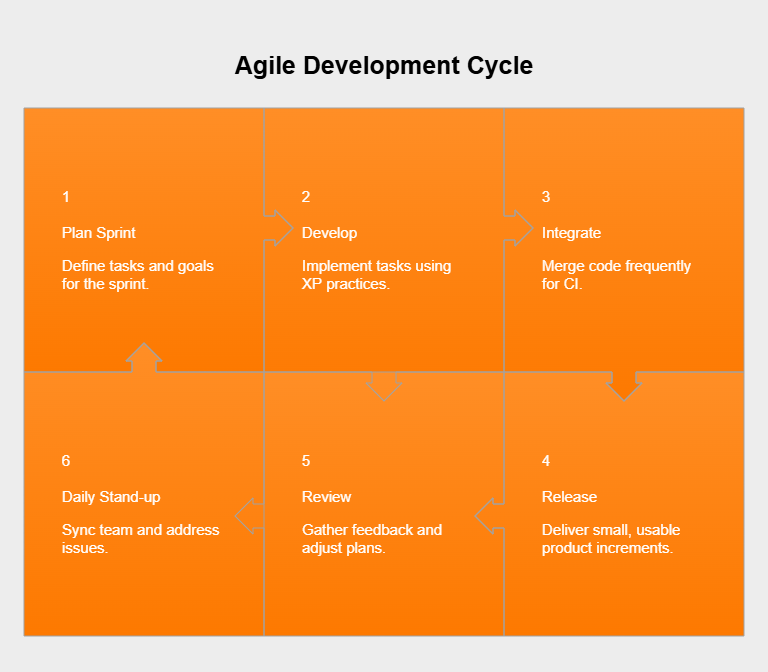
The agile software development lifecycle is fundamentally different from linear models because it’s iterative and incremental. Rather than marching through distinct phases one after another, agile repeats development activities in cycles. A typical agile journey might look something like this:
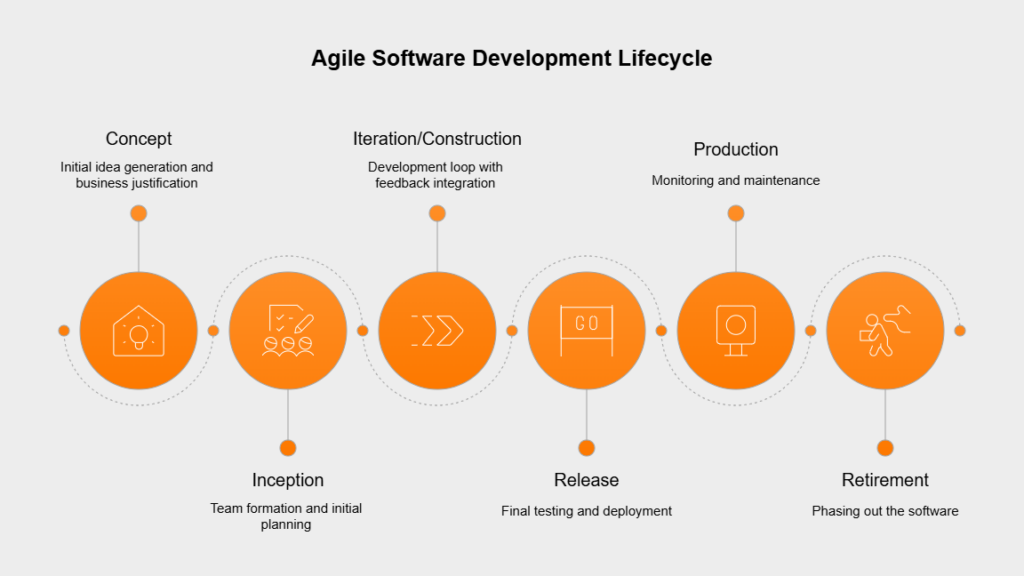
The key thing here is that the Iteration phase happens over and over, letting the product grow and change based on what stakeholders learn and shifting priorities, delivering value piece by piece.
Switching to agile ways of working can bring quite a few upsides for development teams and the business as a whole:
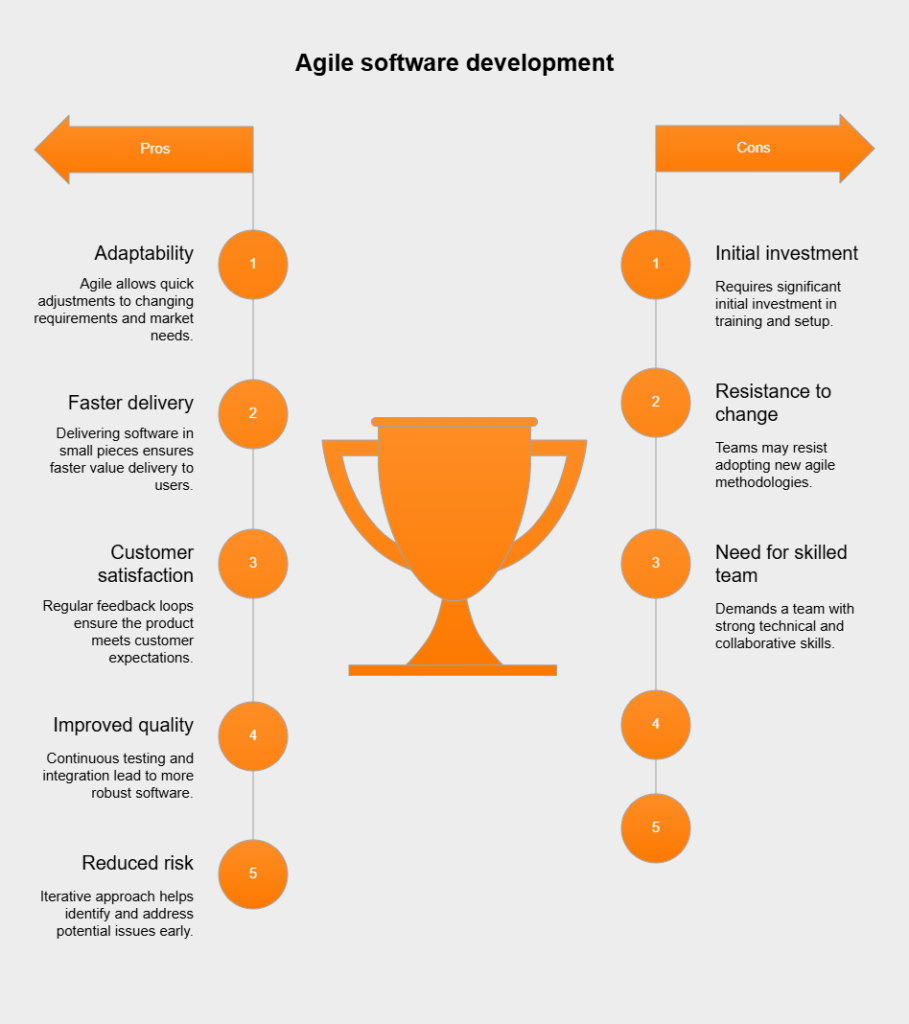
Agile and Waterfall are fundamentally different philosophies for managing software projects. Waterfall is the classic, linear-sequential method where you must fully complete one phase (like Requirements or Design) before starting the next. Agile, on the other hand, is all about being iterative and incremental.
|
Feature |
Agile |
Waterfall |
|
Process Flow |
Iterative cycles, delivers in pieces |
Linear steps, one phase after another |
|
Requirements |
Evolving, changes are welcome |
Defined upfront, generally fixed |
|
Delivery |
Frequent, small releases of working software |
One big delivery at the project’s end |
|
Customer Involvement |
High, ongoing collaboration |
Limited, mainly at the start and finish |
|
Planning |
Adapts plans continuously |
Detailed planning done upfront |
|
Team Structure |
Self-organizing, cross-functional teams |
Often hierarchical, role-specific |
|
Flexibility |
Highly adaptable to change |
Low flexibility, change is often hard |
Essentially, agile values flexibility, teamwork, and quickly delivering usable software parts, while Waterfall focuses on comprehensive planning, documentation, and following a strict sequence.
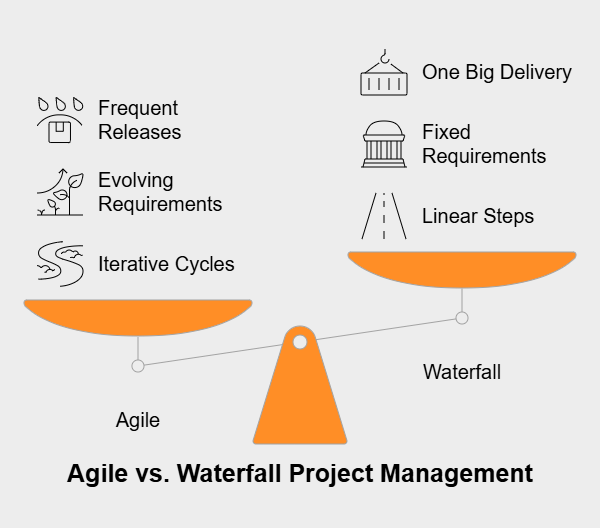
Agile methods tend to shine brightest in situations marked by:
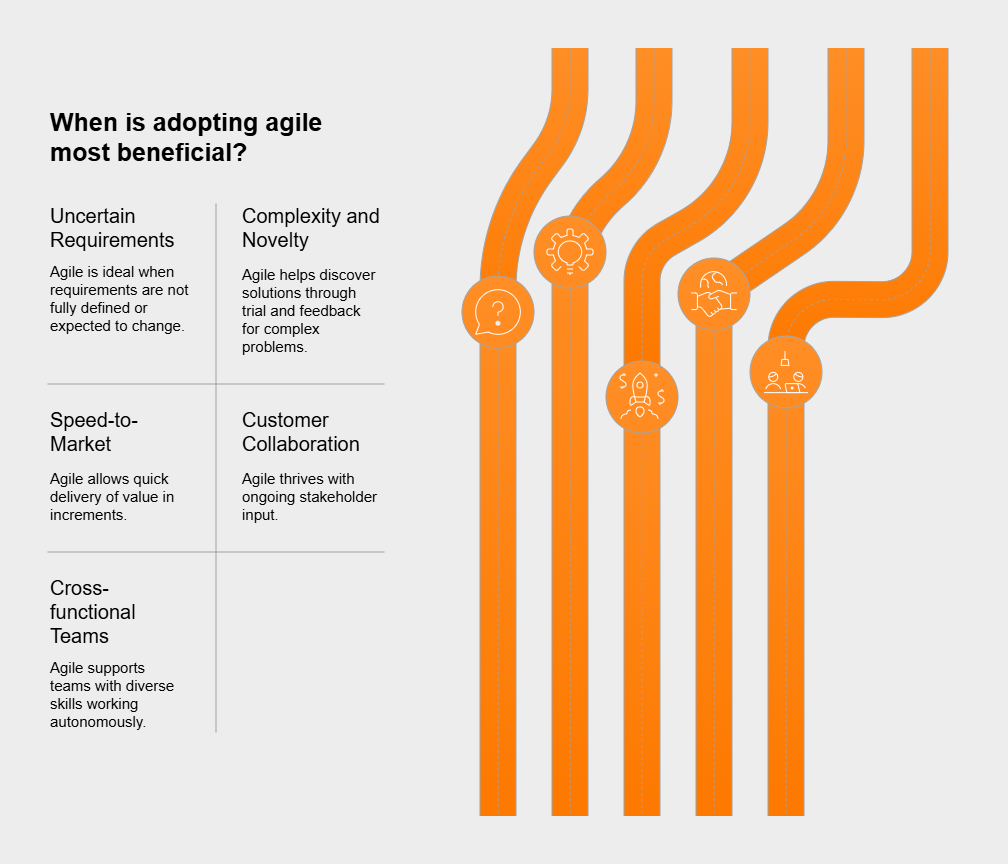
While agile is powerful in many cases, it might not be the best choice for projects with rock-solid, unchanging requirements, strict regulatory demands needing massive upfront documentation, or situations where regular stakeholder interaction just isn’t possible.
